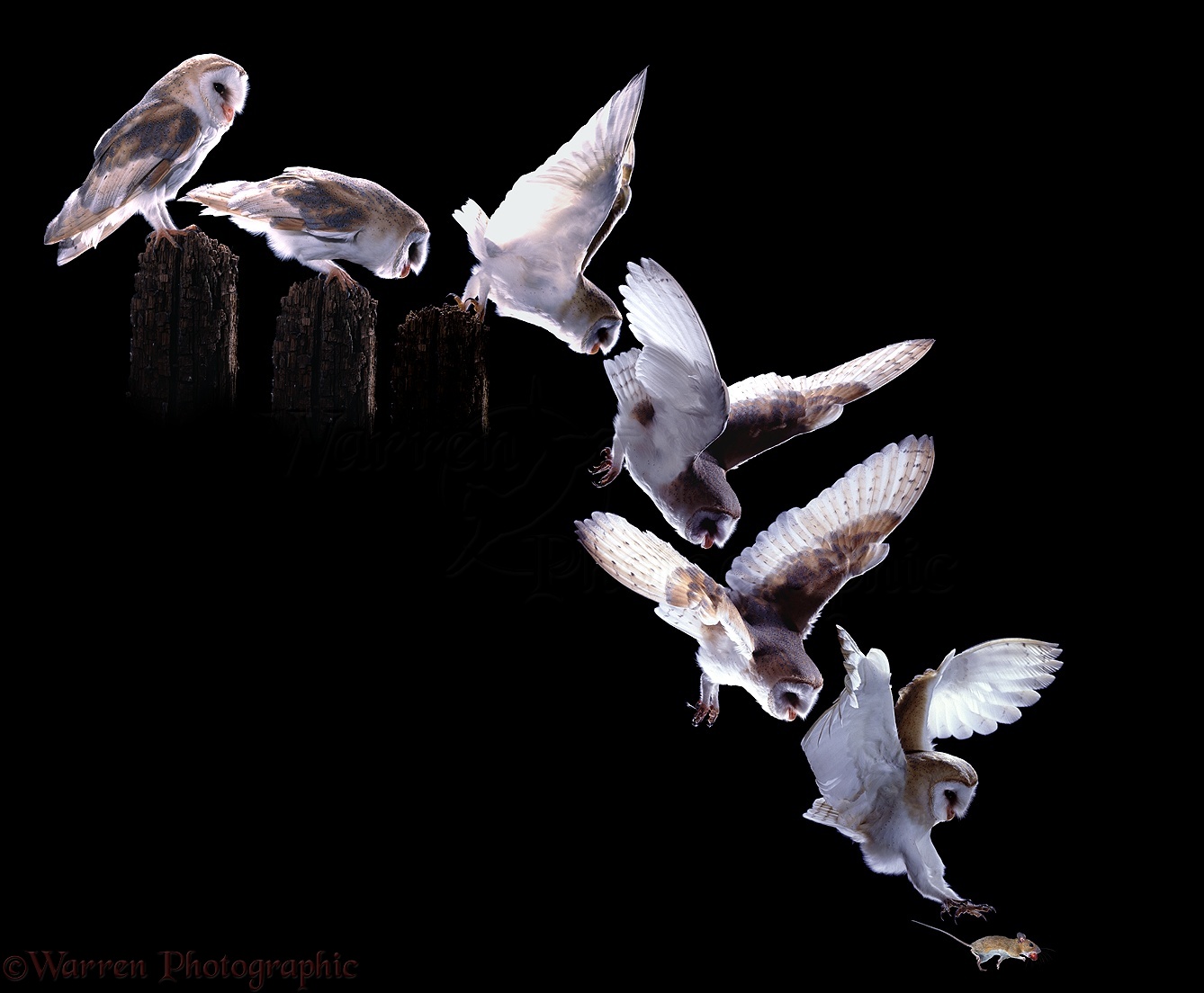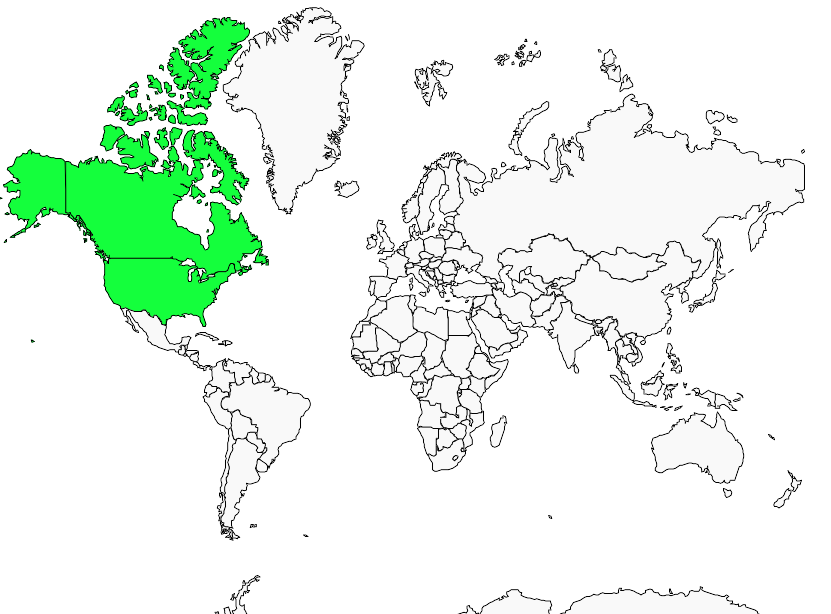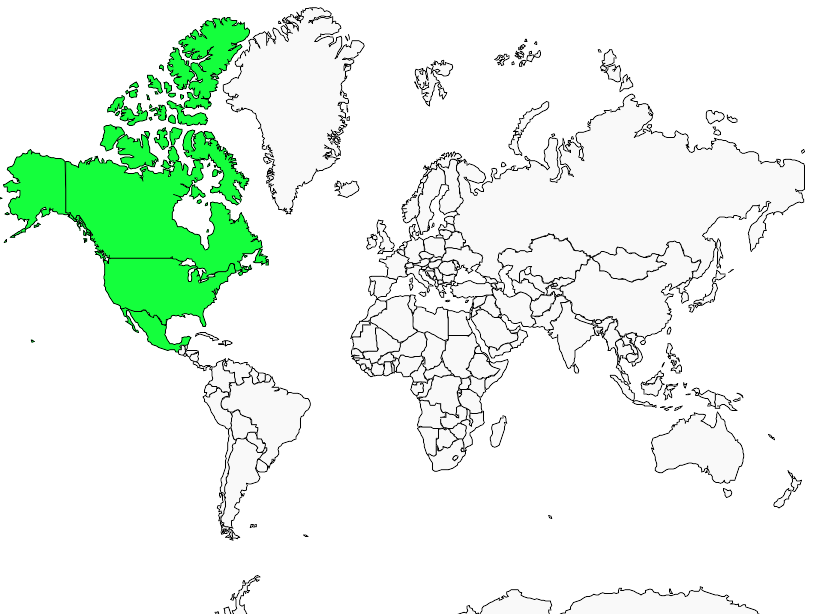
Characteristics:
These pale,
nearly worldwide, birds are closely associated with man through their
traditional use in the Old World of barn lofts and church steeples as nesting
sites. Although widely known beforehand, it was in 1769 when the Barn Owl was
first officially described by Giovanni Scopoli, an Italian naturalist. The
species name "alba" also refers to the colour white. Other names for
the Barn Owl have included Monkey-faced Owl, Ghost Owl, Church Owl, Death Owl,
Hissing Owl, Hobgoblin or Hobby Owl, Golden Owl, Silver Owl, White Owl, Night
Owl, Rat Owl, Scritch Owl, Screech Owl, Straw Owl, Barnyard Owl and Delicate
Owl.
Description:
The Upperparts are light grey with numerous fine dark lines and scattered pale
spots on the feathers. There are buff markings on wings and on the back. The
underparts are white with a few black spots, occasionally none. Feathering on
the lower legs may be sparse. The heart-shaped facial disc is white with a
brownish edge, with brown marks at the front of the eyes, which have a black
iris. Its beak is off-white and the feet are yellowish-white to brownish. Males
and females are similar in size and colour, females and juveniles are generally
more densely spotted.
Size:
Female: Length 34-40cm (13.5-15.5") Wingspan 110cm (43") Weight 570g
(20oz)
Male: Length 32-38cm (12.5-15") Wingspan 107cm
(42") Weight 470g (15.5oz)
Habits:
Generally nocturnal, although it is not uncommon to see this species emerge at
dusk or be active at dawn, occasionally being seen in flight during full
daylight. Flight is noiseless, with wingbeats interrupted by gliding.
Voice:
The
Barn Owl calls infrequently, the usual call being a drawn-out rasping screech.
The courtship call of male at nest is a shrill repetitive twittering. Adults
returning to a nest may give a low, frog-like croak. When surprised in its
roosting hollow or nest, it makes hissing and rasping noises and snapping
sounds that are often called bill snapping, but possibly made by clicking the
tongue.
Hunting
& Food:
Barn Owls specialise in hunting small ground mammals, and the vast
majority of their food consists of small rodents. Voles (field mice) are an important
food item, as well as pocket gophers, shrews, mice and rats. Barn Owls breed
rapidly in response to mouse plagues. Other prey may include baby rabbits,
bats, frogs, lizards, birds and insects. Prey are usually located by quartering
up and down likely looking land - particularly open grassland. They also use
low perches such as fence posts to seek quarry.

Breeding:
Barn Owls will breed any time during the year, depending on food supply. In a
good year, a pair may breed twice. Rodent plagues cause Barn Owl numbers to
increase dramatically. During courting, males may circle near the nest tree,
giving short screeches and chattering calls. The majority of Barn Owls nest in
tree hollows up to 20 metres high. They will also nest in old buildings, caves
and well shafts. 3 to 6 eggs are laid (occasionally up to 12) at 2 day
intervals. The eggs are 38 to 46mm (1.5-1.8") long and 30 to 35mm
(1.2-1.4") wide and will be incubated for 30 to 34 days. Chicks are
covered in white down and brooded for about 2 weeks, and are fledged in 50 to
55 days. After this, they will remain in the vicinity for a week or so to learn
hunting skills and then rapidly disperse from the nest area. Young birds are
able to breed at about 10 months.
Mortality:
Barn Owls are short-lived birds. Most die in their first year of life, with the
average life expectancy being 1 to 2 years in the wild. In North America the
oldest known Barn Owl in the wild lived to be 11 years, 6 months. In Holland, a
wild barn owl lived to be 17 years, 10 months old.
In England,
a captive female barn owl was retired from breeding at 25 years old!
Habitat:
The Barn Owl is found in virtually all habitats but much more abundantly in
open woodland, heaths and moors than forested country. They usually roost by
day in tree hollows but have also been found in caves, wells, out-buildings or
thick foliage.
Distribution:
The Barn Owl is one of the most wide-spread of all land birds. They are found
on all continents (except Antarctica) and large islands and occur over the whole
of Australia, including Tasmania. They occur throughout most of Britain and
Europe and across many parts of Asia, Africa, and in much of North America. In
South America they are found in areas of suitable grassland, as well as on
oceanic islands such as the Galapagos. They were introduced to Hawaii in
1958.


Barred-Owl:

Characteristics:
The first
description of a Barred Owl was published in 1799 by amateur naturalist
Benjamin Smith Barton. In Latin, "varia" is a form of the word
"varius", meaning diverse. It has also been known as Northern Barred
Owl, Swamp Owl, Striped Owl, Hoot Owl, Eight hooter, Round-headed Owl, Le
Chat-huant du Nord (French for "The Hooting Cat of the North"), Wood
Owl, and Rain Owl. It is also mistakenly known as a Bard Owl.
Description:
The Barred Owl is a medium-sized gray-brown Owl streaked with white horizontal
barring on the chest and vertical barring on the belly. They are round-headed
with a whitish/brown facial disk with dark brown trim. The eyes are brown, and
the beak is yellow and almost covered by feathers. They have a long tail. There
is no difference in plumage between males and the larger females.
Size:
Length 40-63 cm (16-25 inches) Wingspan 96-125 cm (38-50 inches)
Weight:
500-1050 grams (17.5-37 oz) (average male 617g, average female 779g)
Habits:
A
nocturnal bird. Hides in dense foliage during the day, usually high up. May
also roost on a branch close to a broad tree-trunk, or in a natural tree hole.
May be very aggressive when defending a nest.
Voice:
The
Barred Owl is a highly vocal Owl giving a loud and resounding "hoo, hoo,
too-HOO; hoo, hoo, too-HOO, ooo" which is often phrased as "Who,
cooks, for-you? Who, cooks, for-you, all?" - The last syllable drops off
noticeably. Like some other Owl species, they will call in the daytime as well
as at night. The calls are often heard in a series of eight, then silence, when
the Owl listens for a reply from other Owls. Other calls include "hoo-hoo,
hoo-WAAAHH" and "hoo-WAAAHHH" used in courtship. Mates will
duet, but the male's voice is deeper and mellower. Many other vocalisations are
made which range from a short yelp or bark to a frenzied and raucous
monkey-like squall.
Hunting
& Food:
A very opportunistic hunter, a Barred Owl can sometimes be seen
hunting before dark. This typically occurs during the nesting season or on dark
and cloudy days. A Barred Owl will use a perch, from where it dives upon its
prey - meadow voles are its main prey, followed by shrews and deer mice. Other
mammals include rats, squirrels, young rabbits, bats, moles, opossums, mink,
and weasels. Birds are taken occasionally, including woodpeckers, grouse,
quail, jays, blackbirds, and pigeons. They also eats small fish, turtles,
frogs, snakes, lizards, crayfish, scorpions, beetles, crickets, and
grasshoppers. Birds are taken as they settle into nocturnal roosts, because
they cannot catch birds on the wing. They will also swoop down to the water's
edge to catch frogs, other amphibians, and occasionally fish. Barred Owls are
attracted to campfires and lights where they forage for large insects. Prey is
usually devoured on the spot. Larger prey is carried to a feeding perch and
torn apart before eating.
Breeding:
Barred Owls calls year-round but courtship activities begin in February with
breeding occurring between March and August. Males hoot and females give contact
calls. As the nesting season approaches, males chase after females giving a
variety of hooting and screeching calls. Males display by swaying back and
forth, and raising their wings, while sidling along a branch. Courtship feeding
and mutual preening also occur. Barred Owls nest in cavities and will also use
abandoned Red-shouldered Hawk, Cooper's Hawk, Squirrel, or Crow nests. Eggs
number 2-4 and are white, and almost perfectly round, with a slightly rough
texture. They are likely laid every 2 to 3 days and incubation begins with the
first egg laid. Incubation period is 28-33 days. The Male brings food to the
female while she is on the nest. The Barred Owl is single-brooded but has a
long breeding season, which allows for laying of replacement clutches if the
first clutch or brood is lost. When the young leave the nest, at about 4 weeks,
they are not able to fly, but crawl out of the nest using their beak and talons
to sit on branches. These Owls are called branchers. They fledge at 35 to 40 days. Once they lose their
down, there is no difference between adult and juvenile plumage.
Parents
care for the young for at least 4 months, much longer than most other Owls.
Young tend to disperse very short distances, usually less than 10 kilometres (6
miles), before settling. Pairs mate for life and territories and nest sites are
maintained for many years.

Mortality:
Barred Owls have been known to live up to 32 years in captivity and 10 years or
more in the wild. Most deaths are likely to be related to man (shootings,
roadkills etc). Great Horned Owls are their only natural enemy.
Habitat:
Barred Owls prefer deep moist forests, wooded swamps, and woodlands near
waterways. Territories are 85-365 hectares (213-903 acres).
Distribution:
The Barred Owl is widespread in North America, they occur across most of the
eastern half of the continent from Florida northward to southern Canada; they
are also spreading westward in the north of their range. Their spread westward
is causing concern as they may compete with the endangered Spotted Owl Strix
occidentalis. Northern populations may be partially migratory depending on food
resources.


See the sound of the Barred-Owl below:
Northern Pygmy Owl:
Characteristics:
Northern
Pygmy Owls have also been called Pygmy Owl, Rocky Mountain Pygmy Owl, Vancouver
Pygmy Owl, California Pygmy Owl, and Dwarf Owl.
Description:
The Northern Pygmy Owl is a tiny, woodland, diurnal Owl that is most active
between dawn and dusk. They have greyish or brownish or reddish (3 morphs)
upperparts and light belly that is boldly streaked with brown. The head and
nape are liberally sprinkled with whitish dots (more cinnamon or buff on red
morph). On the nape are 2 distinctive, vertical black patches that resemble an
extra pair of eyes. The relatively long tail is distinctly barred with 6 to 7
light stripes. Eyes are yellow, bill is yellowish-horn, and the toes are
greyish-yellow.
Juveniles
are similar to adults but with unspotted and greyer heads, and fluffy plumage.
Size:
Average Length Female: 18.5 cm (7.3"),
male: 16.5 cm (6.5")
Average
Wingspan 38 cm (15")
Average
Weight Female 73 g (2.6 oz), Male 62 g
(2.2 oz).
Habits:
Northern Pygmy Owls are very secretive and tend to perch and roost in thickets
where it is safe from predators. At times, one will sit atop the highest spire
of a tree. At rest, a Northern Pygmy Owl sits with its tail cocked away from
vertical, and often twitches its tail when excited. A Northern Pygmy Owl's
flight between perches is short and rapid - plummeting downwards as it leaves a
perch before levelling off, and swooping up to the next. If the next perch is a
tree, it will tend to land low, then moves up through the tree to a higher
perch. Flight is relatively noisy for an owl, and resembles a shrike, with
rapid wing beats and rounded wing tips.
Despite
their small size, Northern Pygmy Owls are quite fierce, and will attack prey or
drive off intruders several times their own size. When one of these owls is
threatened, it will puff up its feathers and spread its tail to make itself
look larger. When hiding, it tries to look thin, faces the danger, and closes
its eyes into slits.
Voice:
The
primary call of the male is a series of repetitive, whistled hoots
"too-too-too-too-too-too-too" at intervals of 1 to 2 seconds,
although it is reported that this can vary from 0.5 seconds, all the way up to
4 seconds. This call is territorial in nature and is usually given in the early
evening and before dawn, and may be heard year-round. The male gives a high
whinnying sound when bringing food to his mate. The female calls much less
often and it has a cackling quality. Other calls include an ascending staccato
series of whistles. When excited, they may emit a high-pitched trill (8
notes/second).
Hunting
& Food:
Northern Pygmy Owls are "sit and wait" predators, that
hunt mainly by vision, diving down onto prey on the ground and driving the
talons into the prey's throat. they will also attack birds in shrubs, crashing
into the hapless victims. Most prey is carried off in the feet to feeding
sites. Birds are usually plucked before being consumed. They often eat only the
brains of birds and the soft abdomen of insects! One of these little owls can
carry prey weighing up to 3 times its own weight.
The
Northern Pygmy Owl feeds on a wide range of small prey including small mammals,
birds, and reptiles and amphibians. Voles make up the bulk of their diet, with
birds comprising most of the rest (mainly songbirds, but as large as a
California Quail). Other small mammals include shrews, mice, chipmunks, bats,
moles, young rabbits, and weasels. Insects may be very important when they are
most abundant. Other prey taken are toads, frogs and small lizards and snakes.
During
winter, surplus prey is cached in a cavity, often in large quantities. These
caches help small owls like these meet their metabolic needs during very cold
winter periods. Summer caches are usually much smaller.Pellets are
very small, averaging about 3cm (1.2") long. They are formed only
occasionally as these owls don't consume large amounts of fur, feathers, or
bone. The pellets tend to fall apart shortly after ejection.
Breeding:
Northern Pygmy Owls are unsociable birds, remaining solitary much of the year.
During courtship both sexes call to each other with their mating trill. They
also pass food to each other and snuggle closely.
Northern
Pygmy Owls are almost entirely dependent on old woodpecker cavities for nest
sites. They will also nest in natural tree cavities. Nest trees are usually
dead and are usually coniferous in the boreal forest and deciduous in more
southern areas. Nest cavities range from 3 to 23 metres (10 to 75 feet) above
ground, averaging 6 to 7 meters (20 to 23 feet). Eggs are laid between April
and June, with clutch size ranging from 3 to 7 (3 - 4 average; may increase
from south to north). The female does the incubating and brooding while the
male brings food and defends the nest. The incubation period is about 29 days.
Unlike all other North American owls, The Northern Pygmy Owl begins incubation
only after the clutch is complete, so that young tend to hatch over a period of
1 to 2 days, rather than one every 1 to 2 days. Young grow quickly, reaching
60% of adult size after 2 weeks. They fledge at about 30 days, when they are
capable of flight. Fledglings are then fed and defended by their parents for a
further 20 to 30 days. Family groups tend to break up in late Summer or Autumn.
Northern Pygmy Owls are single-brooded. It is not known if replacement clutches
are laid. Nest cavities may be used for several consecutive years by the same
birds.There is no
information on territory size, but the similar Eurasian Pygmy Owl has
territories from 200 to 1700 hectares (500 to 4200 acres), and the Northern
Pygmy Owl likely has similar-sized territories.
Mortality:
No information on longevity or mortality currently available. Potential
predators of these owls are other owls, jays, crows, ravens, snakes, and
weasels.
Habitat:
Northern Pygmy Owls inhabit open coniferous and mixed forests from valley
bottoms up to treeline. They do not inhabit dense, continuous forest. In all
areas they use forest clearings for hunting - along the edges of meadows,
fields, wetlands, and roadsides, and through old burns and logged areas. For
roosting they prefer quiet, shady alder thickets. During the breeding season
they inhabit open forests with a selection of snags with old woodpecker
cavities.
Distribution:
West North America, from British Columbia and southern Alaska south through the
Rock Mountains to California and Arizona, and possibly also to the mountains
far north Mexico.
Northern Pygmy Owls are essentially sedentary,
except for altitudinal movements downslope in winter. Southward irruptions
during winter may occ.

